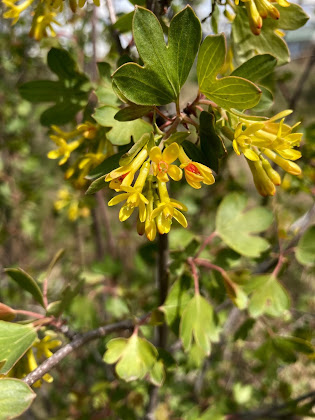Lomatium ambiguum
Not long after I first moved here (early 90s), a guy who lived in our area introduced himself, and asked for a tour of the property, which at the time was in its weedy former-alfalfa-field mode. Jim Roberts is a great musician, and weirdly we never played music together, but he was also extremely knowledgeable about local native plants and was really my first native plant sensei. As we walked around, he commented that my soil here seemed to be in very good shape, and he pointed out native species that were hanging on, including this lomatium species. It is on the uncommon side of things, but I had a nice population in the southern fence row, and he encouraged me to collect the seeds and spread them around, which has turned out to be pretty successful. He also took me to various sites in our area, and showed me threatened places where plants could be rescued. Whenever I see this plant bloom (and several other species he introduced me to), I always have a wave of appreciation for his guidance in getting this project rolling. Thanks, Jim!












